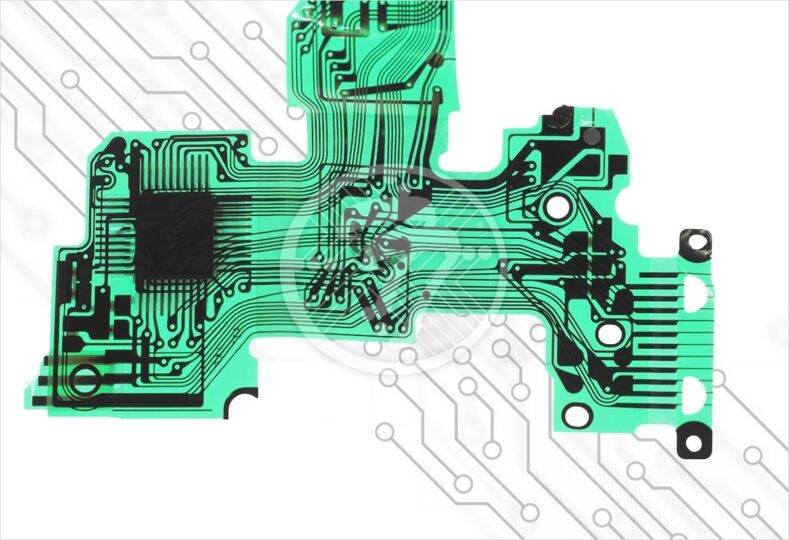How do the unique features of Polyimide PCBs make them beneficial for certain industrial applications?

When it comes to PCBs, there are a whole lot of PCB materials that are used to make these PCBs depending of course upon the application and the environment in which it will be used. Some of the popular materials include:
- Epoxy Resins
- FR4
- Polyimide
- Teflon
What really is Polyimide?
Polyimide is a high-performing polymer, which is made up of imide monomers. Polyimide occurs naturally and can also be manufactured synthetically. Polyimides are broadly of three types:
- Aliphatic
- Semi-aromatic
- Aromatic compounds
The most common way of production of polyimides is through a reaction between dianhydride and diamine.
Polyimides are known for their heat and electrical resistance as well as their high mechanical strength. They are ideal for use in flex and flex/rigid circuit boards.
Beneficial Features of Polyimide PCBs
Below are some features of polyimide that make them extremely useful in certain PCB applications:
Durability
On account of high resistance to physical stress, Polyimide PCBs are extremely durable. They retain their shapes even in extremely harsh environments.
Thermal Stability
Polyimide PCBs can withstand a wide range of temperatures. In fact they are known to support operations with temperatures up to 260℃.
The other advantage with them is that they can resist any thermal damage during production or repair.
Flexibility
Known for their extreme flexibility, they are suited for use in rigid-flex as well as flexible printed circuit boards.
Resistance to chemicals
Polyimides are also known for their chemical stability. If they are exposed to corrosive materials, they do not show any adverse effects. In applications where the PCBs are likely to be exposed to chemicals, Polyimide works best.
Tensile strength
Known for its tensile strength, polyimide PCBs can support high load without any fracture. Also, when it comes to warping, Polyimide PCBs are resilient. They are therefore widely used in applications where physical strength and durability are a must have.
Some of the other important features of Polyimide PCBs include:
- They have an arc resistance of almost 143 seconds.
- Ehen it comes to integration & mounting of components, it is far easier with Polyimide PCBs than FR4.
- They act as natural adhesives and even at high temperatures are know for their bond strength.
- They are known for their tight tolerances.
- They can be made moisture resistant using oligomeric dianiline.
- They have a specific gravity of up to 1.6 g/cm cube.
- At 1GHz, they have a dielectric constant of 4.2.
Difference between Polyimide PCB & FR4 PCB
Some of the differences between Polyimide & FR4 PCBs include:
- While Polyimide PCBs are highly resistant to chemicals, FR4 PCBs are moderately resistant.
- The tensile strength of Polyamide PCBs is 231MPa, that of FR4 PCBs is 70 MPa.
- Polyimide PCBs show higher thermal cycling than FR4.
- In terms of durability, Polyimide PCBs are far more durable than FR4 ones
- Polyimide PCBs can operate in temperature ranges of -200 to 300 degrees Centigrade. The corresponding range for FR4 PCBs is -50 to 110 degree Centigrade.
- Polyimide PCBs have a Glass Transient Temperature range of 195 to 220 degrees centigrade. For FR4 PCBs it is 135 degrees Centigrade.
Polyimide PCB Applications
Little surprise then that Polyimide PCBs are used in a wide variety of PCB industrial solutions, including but not limited to:
Medical Industry
Polyimide PCBs find application in:
- Magnetic resonance imaging equipment
- Ultrasound equipment
- Flex and rigid-flex interconnects for sensitive equipment
Industrial Equipment
- Power inverters
- Motor Controllers
Automotive Industry
- Engine management systems
- Antilock braking systems
- ADAS vehicle systems
Telecommunication Equipment
- Phone switching systems
- Cell towers
Military Applications and Aerospace Industry
- Power distribution systems
- Communication and Defense navigation systems
- Electronic flight instrumentation systems
- Digitized signal and microwave processing systems
Consumer Products
- Televisions
- Consoles for video games
Telecommunication Equipment
- Phone switching systems
- Cell towers
To Sum Up
Polyimide PCBs work as a very good alternative to FR4 printed circuit boards on account of the features that Polyimide PCBs offer. These mainly include flexibility, thermal resistance, quality and reliability.
It is important, however, to use your PCB partner with care as they can offer a wide variety of customized PCBs that suit your industry and their bespoke requirements.
At Technotronix, we combine state-of-the-art technology with our advanced engineering to offer you the highest quality PCB manufacturing services. With over four decades of experience in delivering high quality, on-time, price-competitive products, you can rely on us for your PCB requirements. Also, you can drop an email to [email protected] or give us a call at 714/630-9200 to solve your queries or to get a quote.






